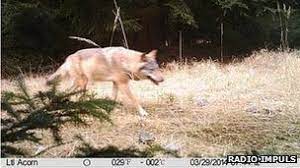Yesterday, I was writing about a new wolf pack that had established itself in northern California – this is exciting, because wolves have only started recolonising California in the last couple of years and they seem to be thriving (as one would expect). Indeed, wolf recovery in America is highly likely (assuming policies like Trumps delisting of all wolves, is never taken up).
Wolves appear to have successfully recolonised the Czech republic!

In Europe the persecution of wolves goes back far further. Indeed when the Mayflower sailed while wolves had not yet disappeared from the UK (this happened in 1760 officially) they were already pretty rare across most of the UK, and similarly in many countries in Europe.
The iron curtain caused many issues. Families were split almost completely for decades and starvation was a regular problem behind the iron curtain. One positive, was that wolves moved down the no go corridor. On the Eastern side of the iron curtain wolves were far more common, but this corridor allowed them to return to various countries.
There are various populations of wolves and bears to the west of where the iron curtain existed. There is a population of bears and wolves in western Spain and norther Portugal, and a relict population in both Southern France and in Italy.
However, unfortunately by the time that the iron curtain came down, a block of central European countries had become so hard for wildlife to live in that they became an essential block on wildlife moving west. These include Austria Hungary Czech republic and Ukraine.
This is why it is exciting that current wolf estimates for the Czech republic is 80, with individuals seen as early as 2014, following an absence of 20-30 years. Some other countries on this list have small populations but they are insignificant compared to the countries size.
If this migration block could break down, it would allow the small populations in the west to mingle once again with relatives in the east, making the whole population far more viable.
